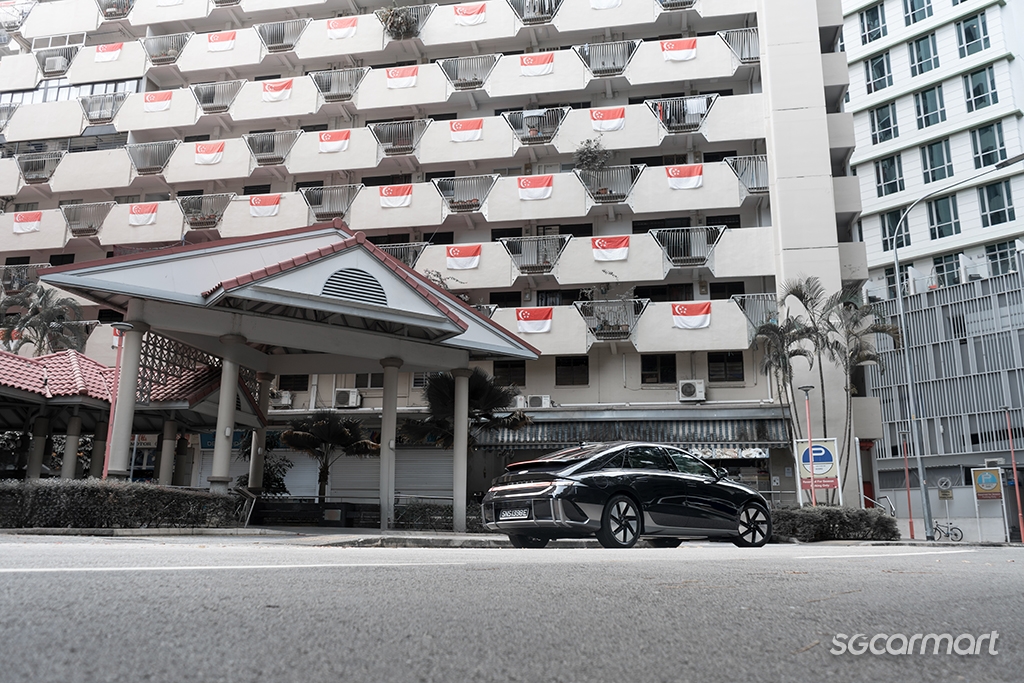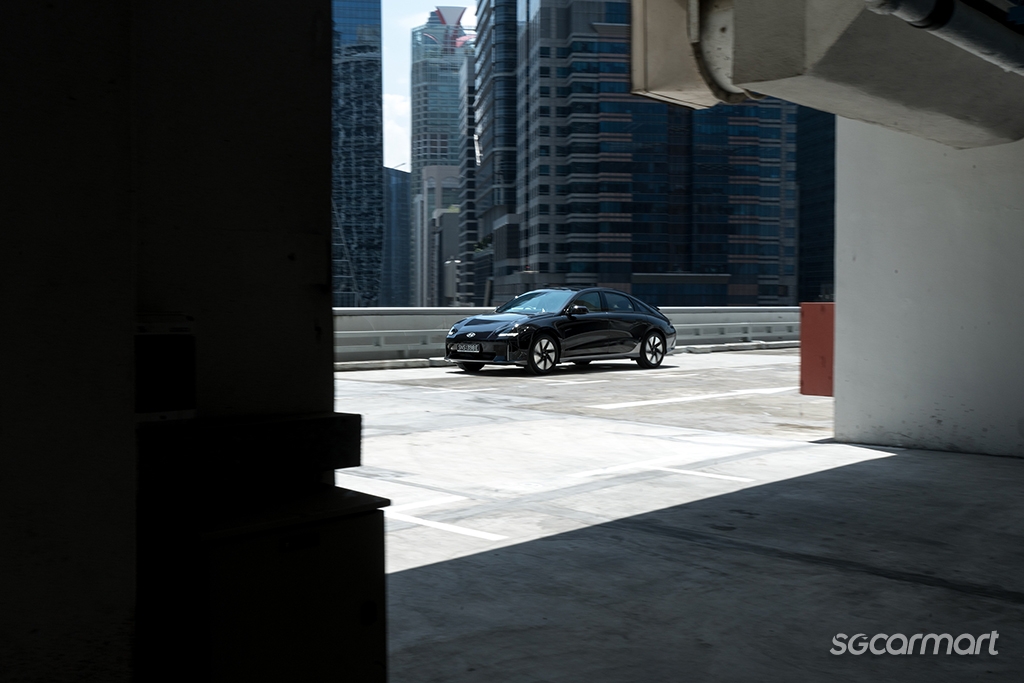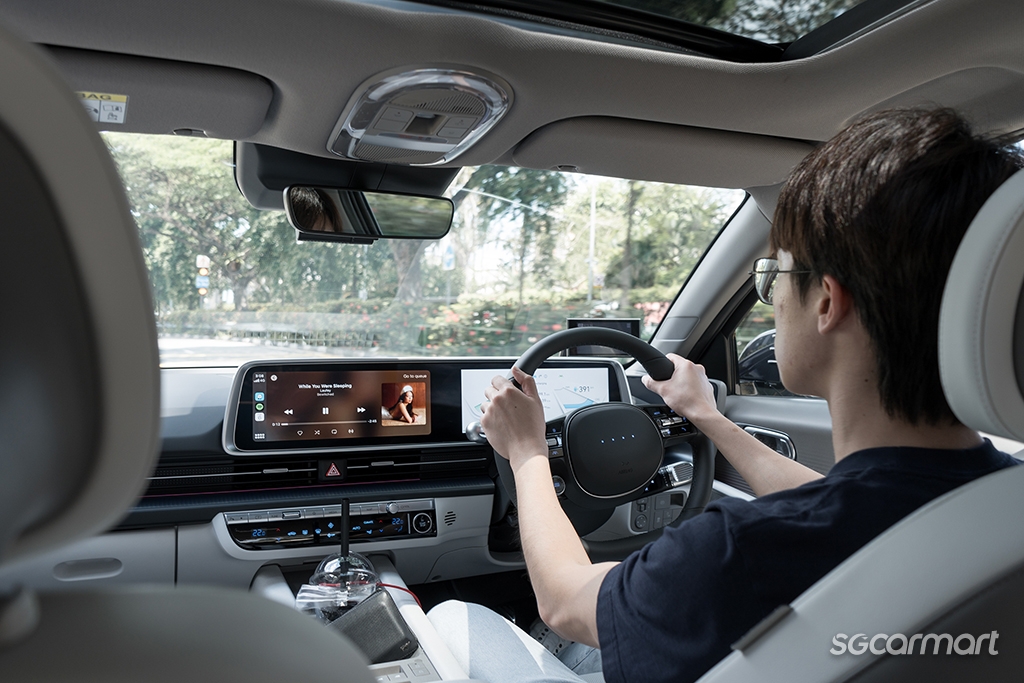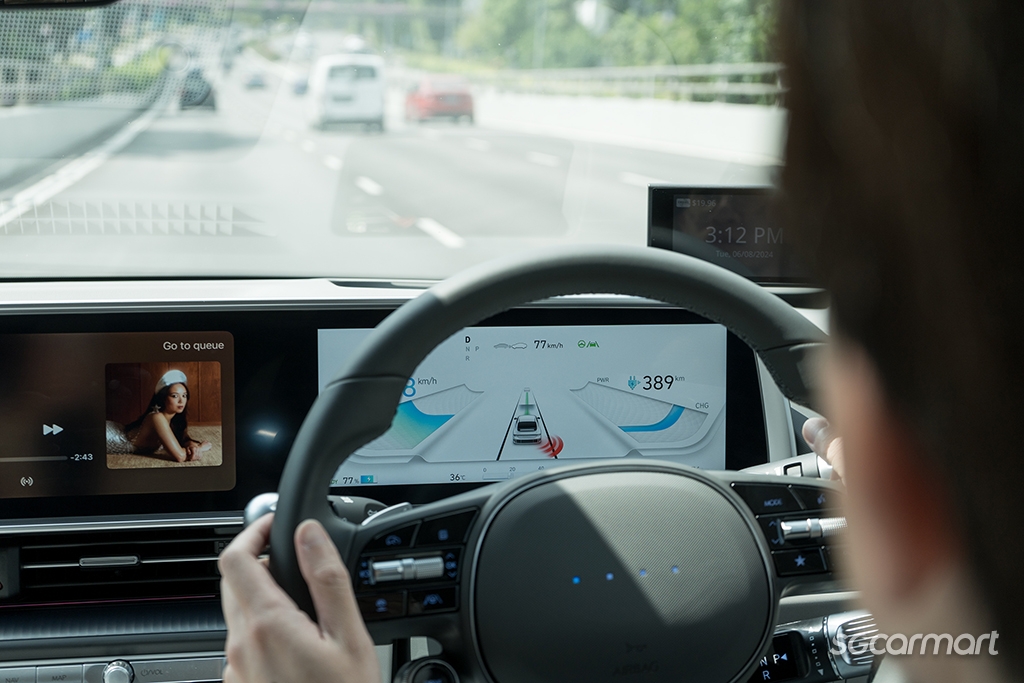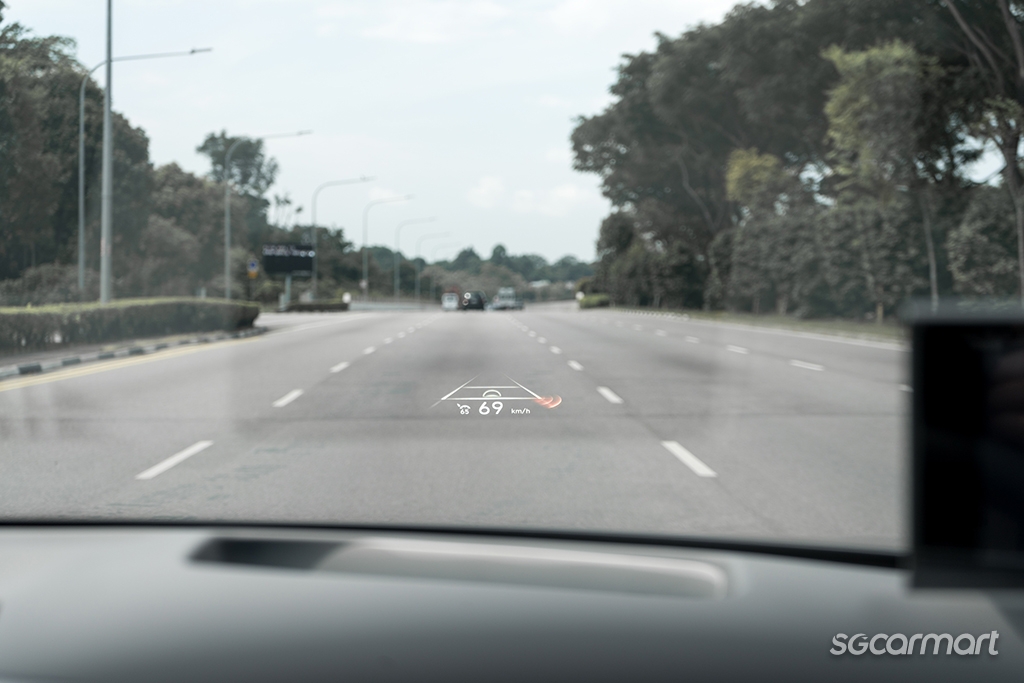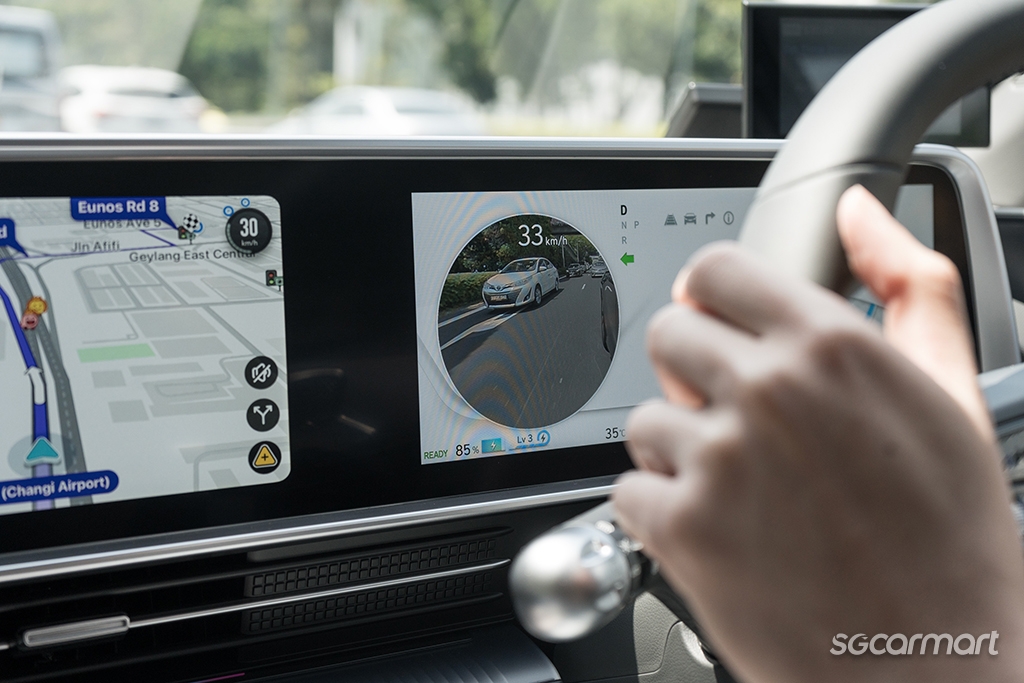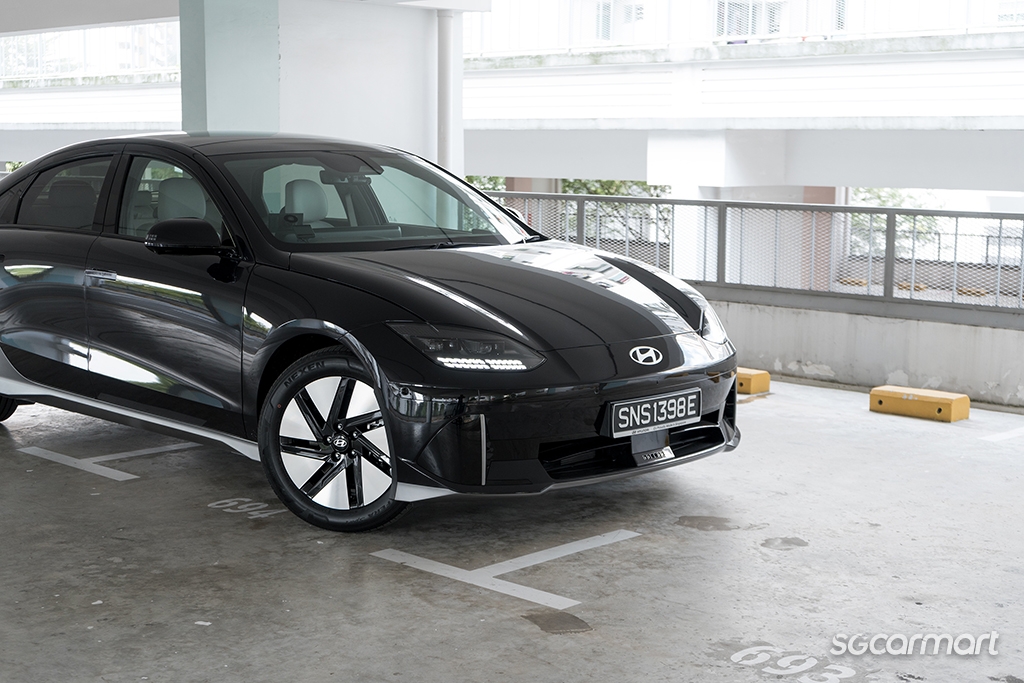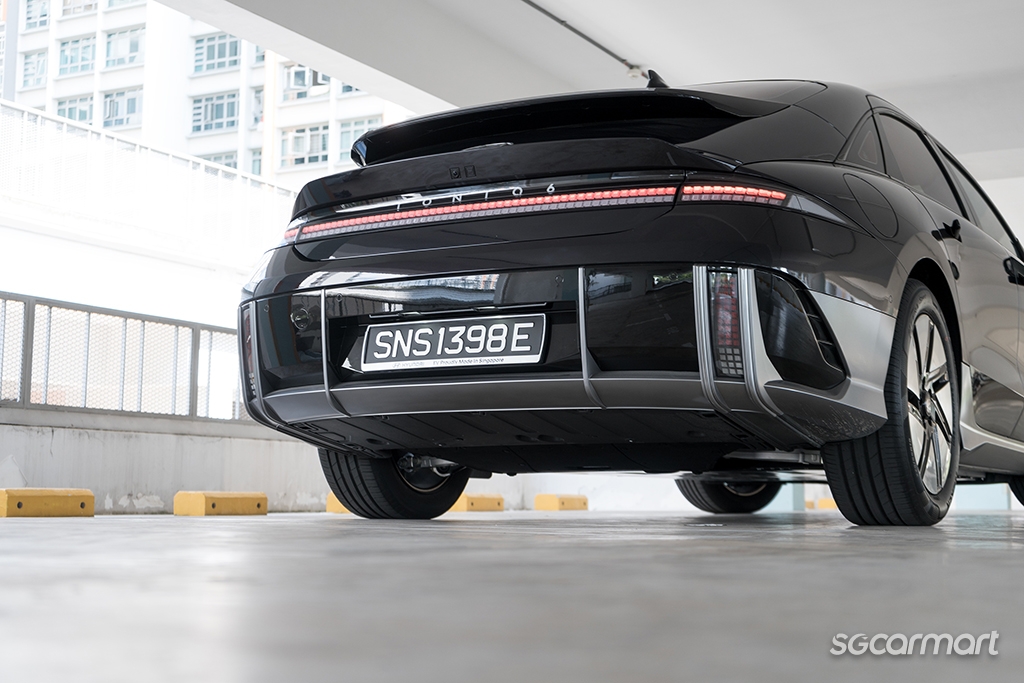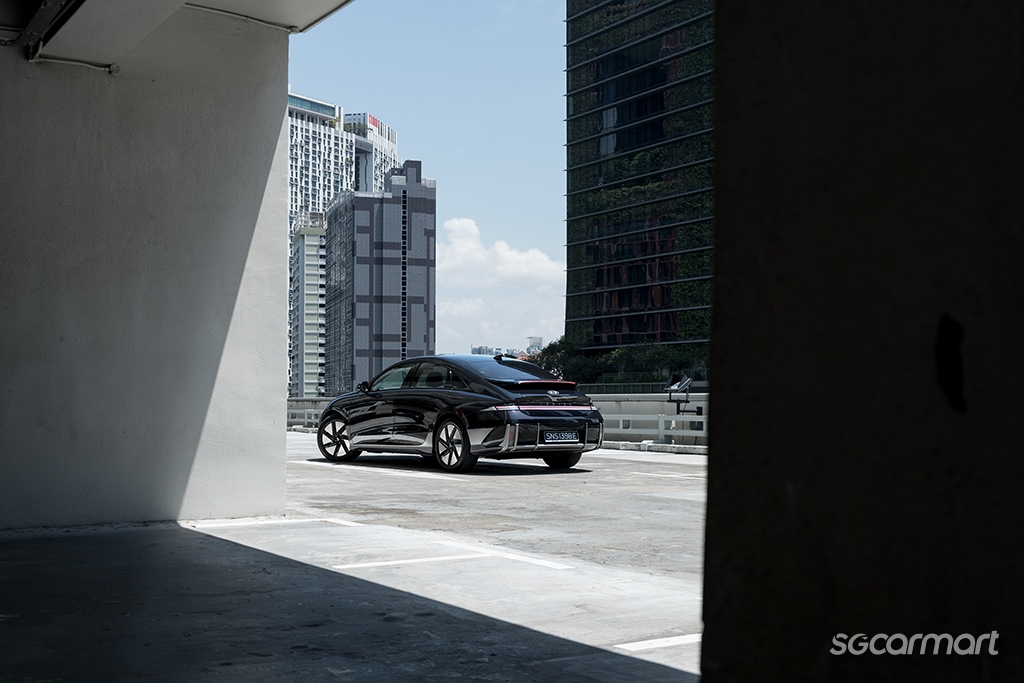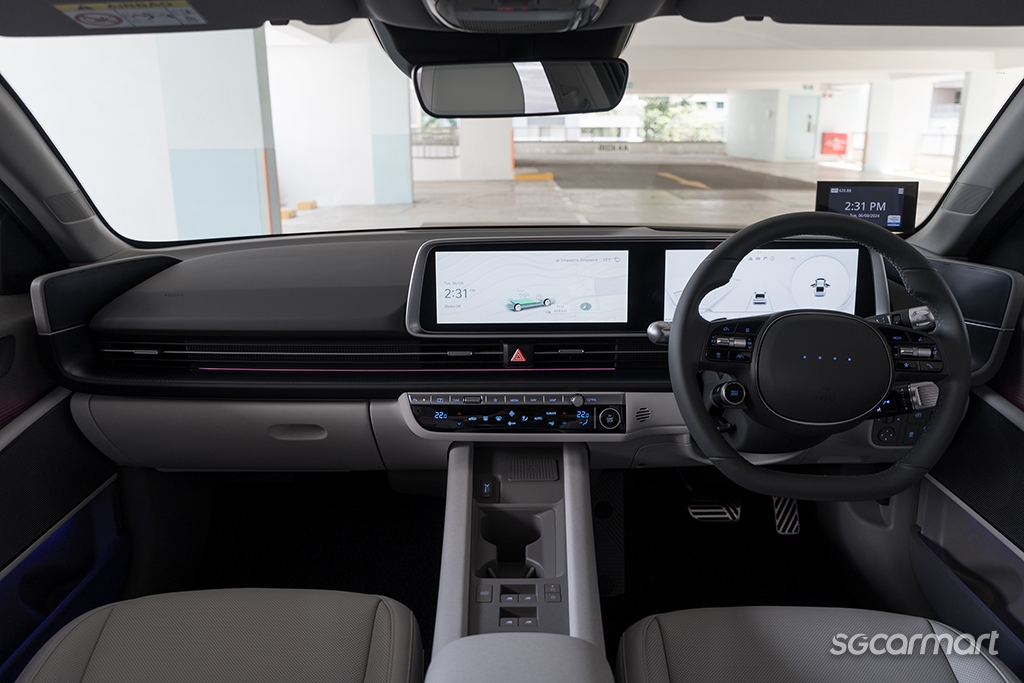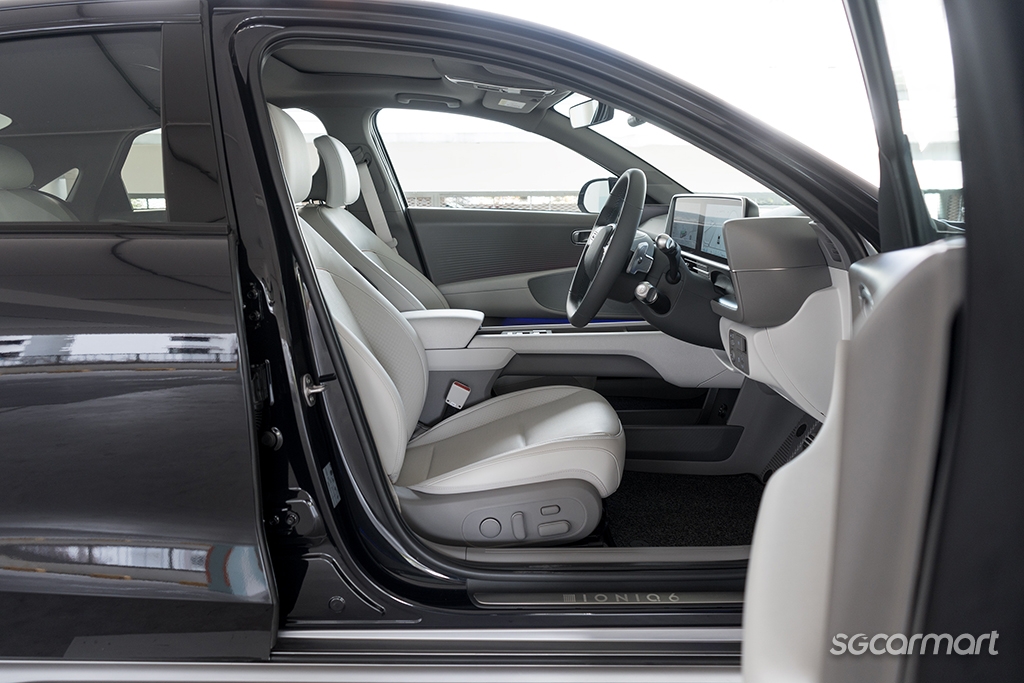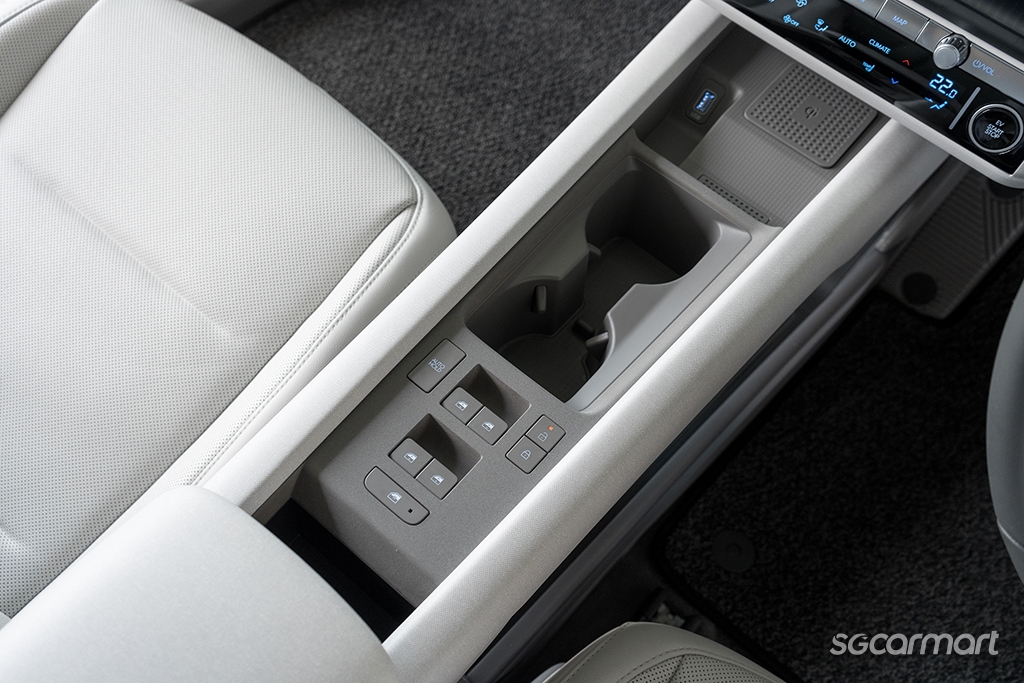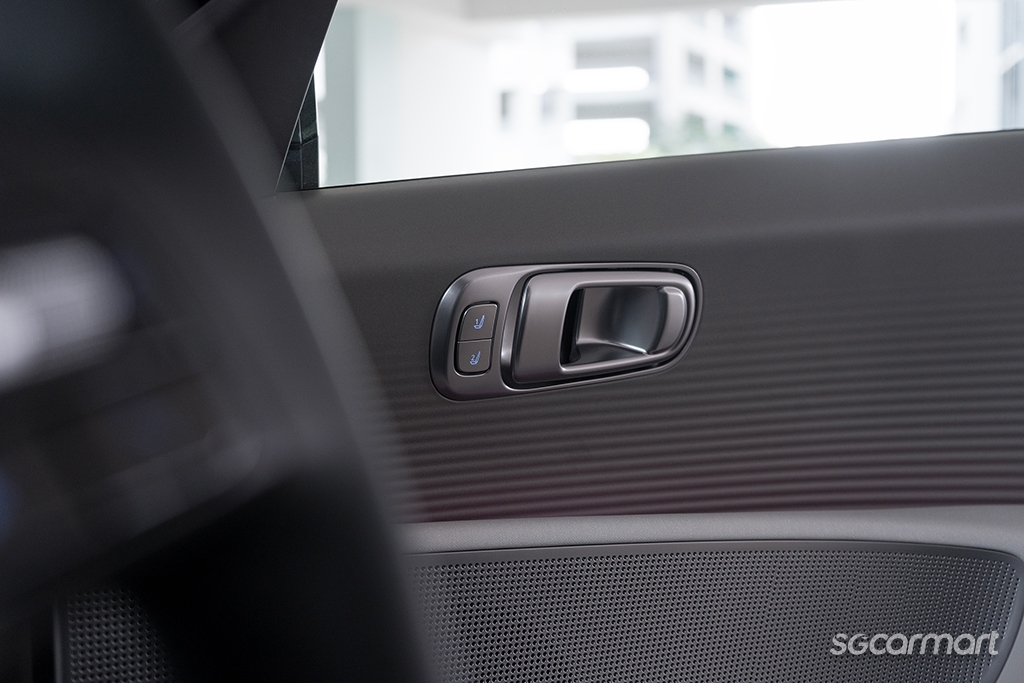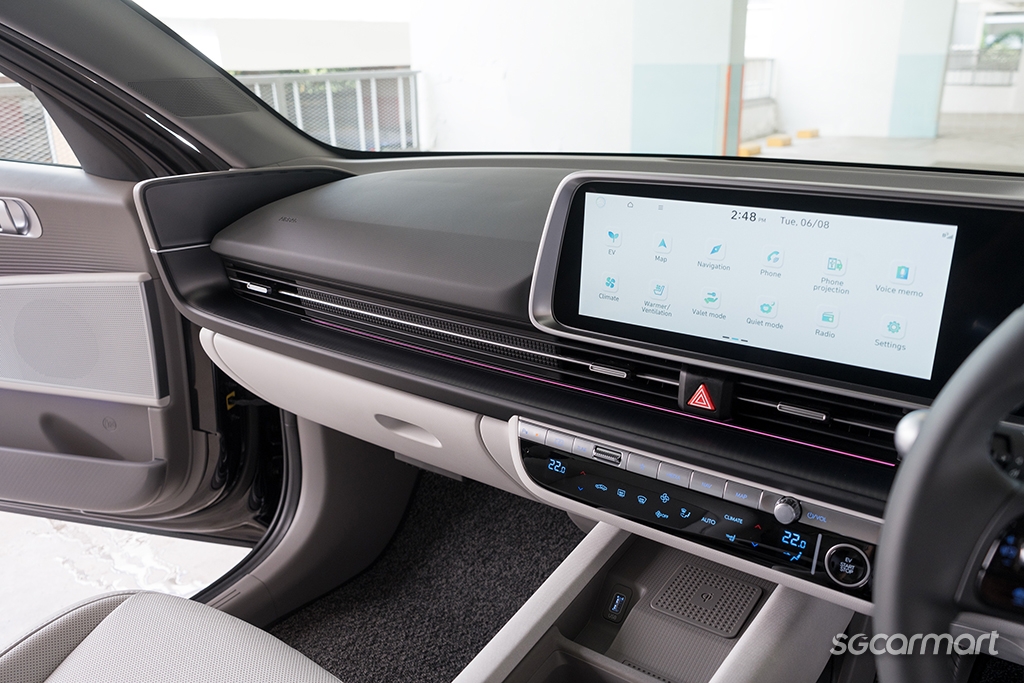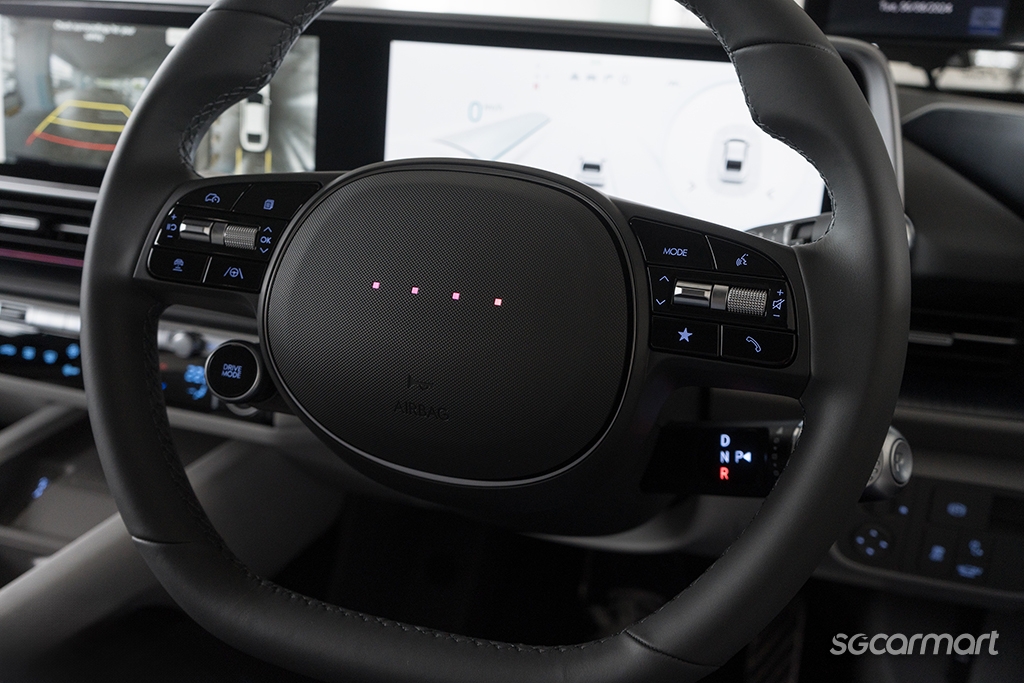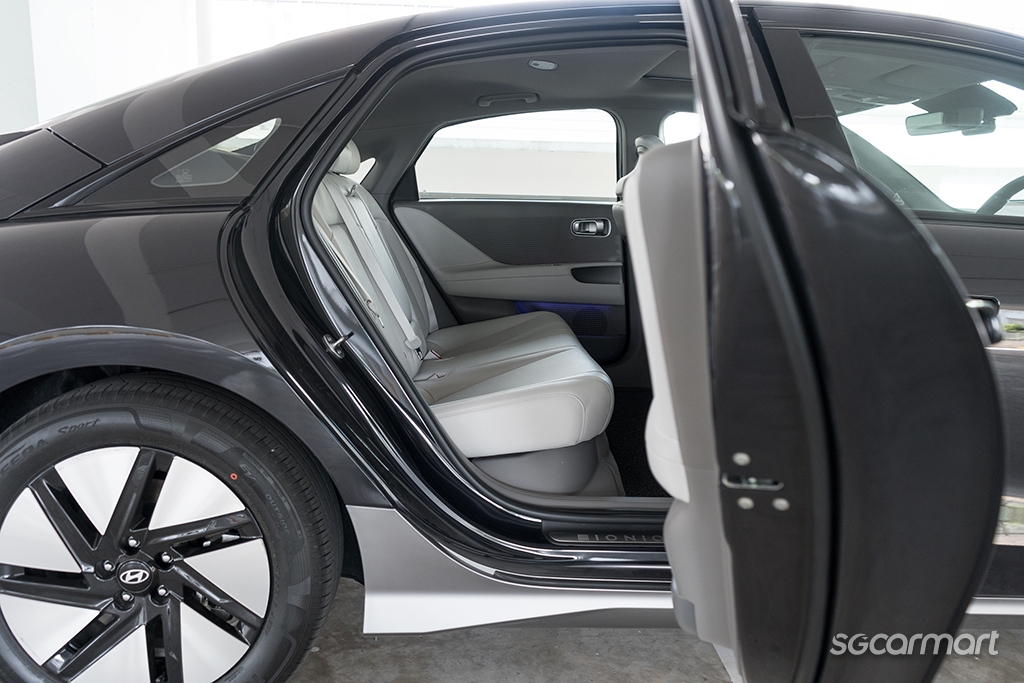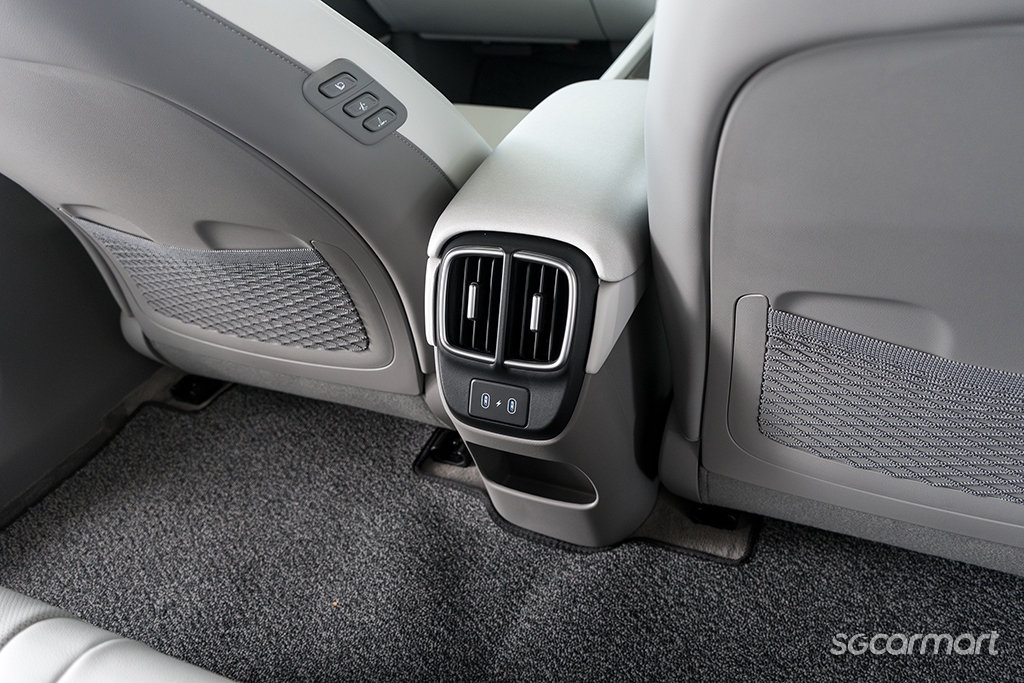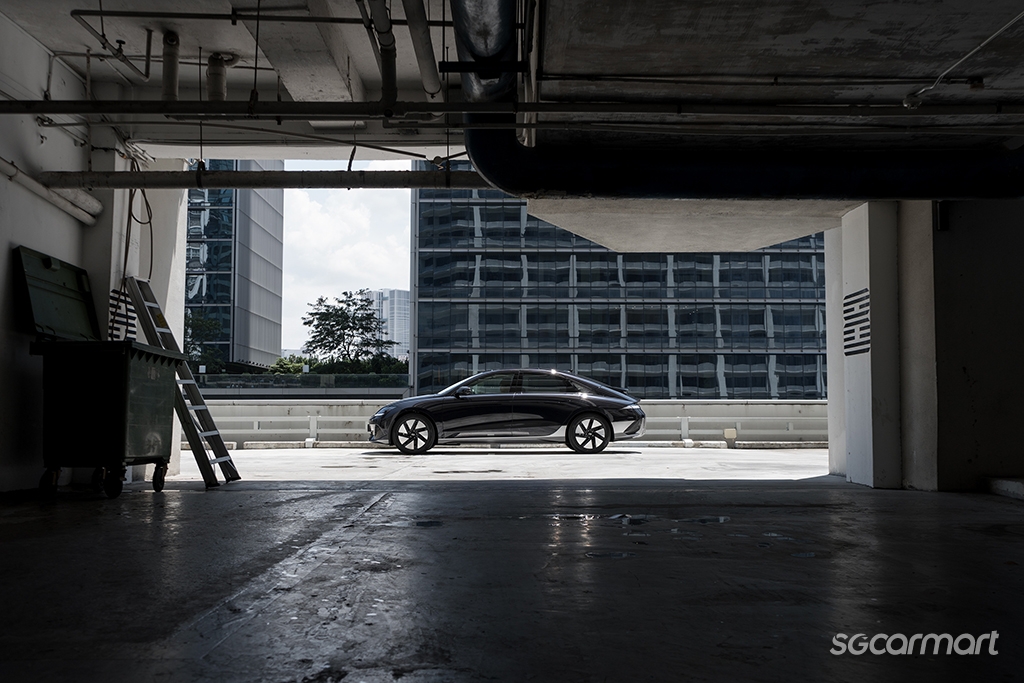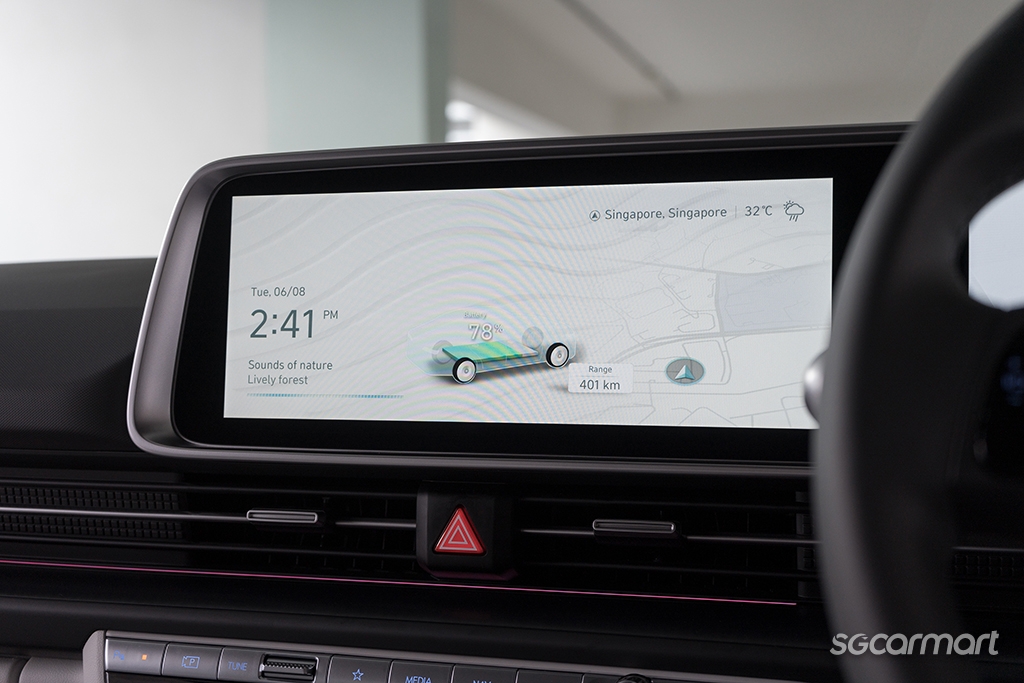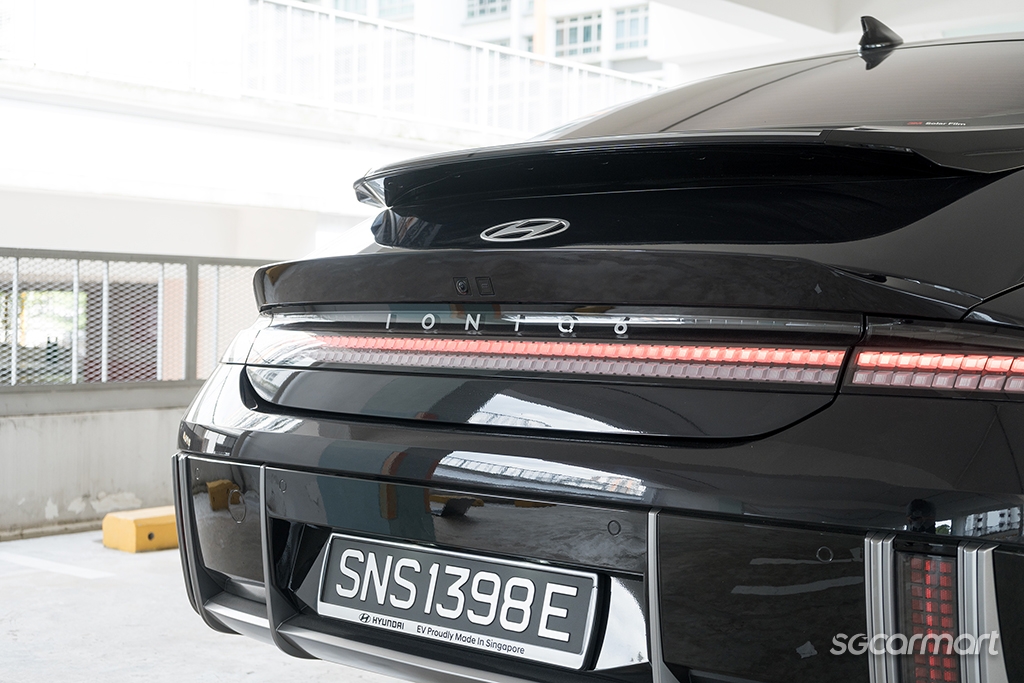Hyundai Ioniq 6 Prestige 77kWh RWD Review
13 Aug 2024|10,371 views
What We Like
Sweet-spot blend of power and range
Lovely balance between driving engagement and passenger comfort
Head-turning, new-age styling
Soothing and airy cabin
Loaded with tech and equipment
What We Dislike
Not as practical or spacious as its SUV-sibling (the Ioniq 5)
New-age styling still likely to be divisive
Lack of wireless connectivity for Apple CarPlay/Android Auto
The "Made in Singapore" tagline may be the first thing that stands out to you about the recently-reintroduced Hyundai Ioniq 6. But peer closer and the real material draw should be clearer: There are now four different flavours of the electric sedan for drivers to choose from. That's two more than before (though it's worth noting we never got round to testing the initial CBU Cat A variant).
More significantly, whereas the Hyundai Ioniq 6 was initially offered in a (blazing quick) dual-motor setup during its initial launch a year ago, the widened spread now gives you newfound single-motor sensibility - in three distinct trims, to be exact. For the perfect, sweet-spot blend between power and range? Arguably none does it better than this: The Prestige 77kWh variant.
Balance behind the wheel: Giveth and taketh
A four variant lineup may seem confusing so let's clear things up first: This is not one of the widely-trumpeted, Cat A-eligible iterations of the Ioniq 6. To dip down below the 110kW power ceiling, you'll have to look instead to the Exclusive 53kWh and Prestige 53kWh variants.
What the Prestige 77kWh is, however, is the best of both worlds. It has the larger 77kWh battery pack for more range, and is also powered by a more powerful electric motor, sending 225bhp and 350Nm of torque to the rear wheels.
Against the dual-motor variant, what this Prestige 77kWh gives up in outright speed, it makes up for in slight edges in agility, thanks both to its rear-wheel drive and marginally lower kerb weight. It feels that bit lighter on its feet.
At the same time, its firepower remains more than adequate for Singapore's roads. The car's on-paper 7.4 second century sprint feels faithful to the experience from behind the wheel: More than plenty to quickly leave most family cars (we're thinking combustion-powered compact sedans, and electric crossovers) behind as tiny dots in the rearview mirror.
This new powertrain, however, doesn't change the Ioniq 6's original and acute grasp of balance.
With varying recipes, plenty of other four-door electric sedans within the same price segment (we're talking American, Chinese and even Swedish) pursue a more performance-oriented slant, especially with their firmer suspension tuning. The Ioniq 6, however, is keener on walking the line that cuts straight through the middle of sportiness and comfort.
This approach works out no matter where you find yourself seated. In the rear bench or shotgun seat, long commutes or traffic jams are non-issues; the car's pliant ride and silence enveloping one in sublime comfort. But in the driver's seat, the Ioniq 6 is rewarding too.
Its lower ride height and shorter wheelbase give it an unmistakably nimbler character compared to its SUV-sibling, the Ioniq 5 (which rides on the same platform). Take on a twisty road with gusto - and sure, you might want more lateral support than the broad, cushy seats can muster - but the car otherwise complies with eagerness. It feels well-planted around bends; its general sharpness aided by a well-weighted and decently quick steering rack.
Nonetheless, the car's headlining act is still its range.
You'd expect the Ioniq 6 to (figuratively) nibble away at, rather than chomp down on the electrons from its battery pack, given its slippery body - which we'll come to in a bit. And indeed, for something of its size and near two-tonne weight, it does commendably. Our driving patterns would have eventually returned close to 550km on a full charge - some fair bit down from the WLTP-rated 614km, but still outstanding by the standards of modern EVs.
Then, there's the tech front to consider too. Hyundai arguably has one of the most sensibly calibrated suites of driving assistance features on the market today, and on the Ioniq 6, these are unsurprisingly easy to activate and operate. But even better is how these are integrated into the head-up display.
The Ioniq 6's head-up display works wonderfully on the road - communicating lots of information in a manner that still doesn't overwhelm. Meanwhile, Hyundai's suite of safety assistance features remains one of the best-calibrated in the business currently
Instead of vigorously jabbing/poking at your senses, alerts are doled out in gentle nudges.
Notice how the Speed Limit Assist turns the digits orange first, and then red, when you're not being careful with your speed. Or how a little camera icon lights up on the top right as you're approaching a speed trap. Directions are even fed directly onto the windscreen, should you use the car's native navigation system.
Between the future and the past
What isn't new, however, is the car's retro-futuristic, head-turning styling.
If there's anything to note, against the top-of-the-line dual-motor variant, you'll notice the Prestige 77kWh riding on smaller 18-inch wheels (as the rest of the single-motor variants do). Otherwise, nothing else separates the two cars visually.
That's not to say the Ioniq 6 isn't capable of being a conversation-starter still.
Given that the model as a whole has been on our roads for a while, chances also are that you've already made up your mind about how it looks.
While it's not unusual nowadays for the shape of an electric car to be heavily informed by the pursuit of aerodynamic efficiency, Hyundai's Parametric Pixel-studded take on the form remains a stunner in its own right, slanting to the better side of cool than clumsy.
If the front of the car seems quite subdued, just wait until you let its side profile come into view. Walking up to it on an empty stomach, you might even see flashes of a croissant in its aggressively pulled back, swooping silhouette - or since we're on the general homegrown theme, perhaps a curry puff instead.
But the rear is really where it gets the busiest. What initially appears to be a full-length light bar actually reveals itself to be composed of countless pixels. Few other four-door sedans proudly wear both a 'duck tail' and an additional spoiler on their rears, or protruding ridges on their bumpers - but the Ioniq 6 does both, and with brash, alluring confidence too.
Likewise, while the car's cabin - which succeeds exceedingly at aiming for long-wearing satisfaction rather than immediate zing - isn't new, time has allowed appreciation for its sensibility to grow.
While the overarching air of minimalism isn't unique today, its resolute consideration for ergonomics and aesthetics - with the Ioniq-filter applied, of course - is.
Measurable space is still abundant inside, but there are certain qualities to the interior - the lower roofline, for instance, and the clear division between the driver's and front passenger's individual quarters - that make the figurative space a cosetting one. Finding perfect middle ground between airiness and cosiness isn't easy - but the Ioniq 6 has it down pat.
Furthermore, this light dual-tone interior helps in bringing out the car's inviting, eco-friendly, and cocoon-like atmosphere best. Even the manner in which the cove-lighting spills delicately out onto the door cards feels gentle in its nature - as does the way the pixels on the steering light up in pink when you put the car into Reverse.
Continuing the car's sense of balance, the cabin feels modern, soothing, high-tech, yet also user-friendly all at once - especially with its widespread retention of physical buttons. An extra treat: These pixels on the steering wheel light up in pink when the car is put into Reverse
Cosiness aside, the Ioniq 6's digital-physical mix is also another praiseworthy aspect of its interior.
While there is no shortage of digital real estate thanks to the car's twin 12.3-inch screens, the car's love affair with buttons remains strong, encompassing a nicely-damped knob for adjusting volume, and even a physical Drive Mode button right on the steering wheel.
The car's gear lever, which now takes the form of a swivel stalk behind the steering wheel, should only confuse first-timers lightly for a couple of days; they'll find themselves enjoying it thereafter, with its lovely damping and convenient positioning.
There's just about enough headroom in the rear despite the sloping roofline - but the sheer amount of legroom available is generous, and is aided by the car's flat floor
Again, there's fun to be had if you want: Peer closer if you'd like to unearth every single one of the Parametric Pixels inside - down to the dashboard trim between the air vents. Otherwise, the motif blends seamlessly into the interior's design.
Perhaps surprisingly, even average-sized adults shouldn't find themselves struggling for headroom in the rear despite the sloping roofline - although those with taller torsos are likely to have to slouch slightly. On the other hand, even hyperactive types will find no issue with constantly switching between sitting with their legs stretched out or crossed over, thanks to the car's generous wheelbase and flat floor.
Even better balance with the original blueprint
Given that so much of the Ioniq 6's image is built around its styling - and in turn, that so much of its styling is built around aerodynamics - the Prestige 77kWh feels like the original blueprint, meant to bring out the best in the car.
It's great that consumers now have other flavours they can either move up towards for more power (the Inspiration 77kWh), or down towards for more economy (the Prestige 53kWh or Exclusive 53kWh). But having said that, no other variant silently screams 'electrified streamliner' quite like this one. The brain struggles to think of many cars in this segment that still indicate more than 400km of range left with their batteries at 80%. The Ioniq 6 Prestige 77kWh does this, too, while continuing to offer a dollop of power that is generous enough to still thrill.
And above all, this fresh balance is built atop of a template that has always excelled in finding the perfect middle ground anyway: Between driver engagement and passenger comfort; between tech and usability; and between retro-ism and futurism. Even if "support local" has never been your thing, take it that the "Made in Singapore" tag has accentuated the hyper-specific lustre of the surprisingly gentle and user-friendly Ioniq 6, by widening its lineup and giving us this single-motor, long-range variant.
Here are a couple other electric sedans on the market to consider!
What We Like
Sweet-spot blend of power and range
Lovely balance between driving engagement and passenger comfort
Head-turning, new-age styling
Soothing and airy cabin
Loaded with tech and equipment
What We Dislike
Not as practical or spacious as its SUV-sibling (the Ioniq 5)
New-age styling still likely to be divisive
Lack of wireless connectivity for Apple CarPlay/Android Auto
The "Made in Singapore" tagline may be the first thing that stands out to you about the recently-reintroduced Hyundai Ioniq 6. But peer closer and the real material draw should be clearer: There are now four different flavours of the electric sedan for drivers to choose from. That's two more than before (though it's worth noting we never got round to testing the initial CBU Cat A variant).
More significantly, whereas the Hyundai Ioniq 6 was initially offered in a (blazing quick) dual-motor setup during its initial launch a year ago, the widened spread now gives you newfound single-motor sensibility - in three distinct trims, to be exact. For the perfect, sweet-spot blend between power and range? Arguably none does it better than this: The Prestige 77kWh variant.
Balance behind the wheel: Giveth and taketh
A four variant lineup may seem confusing so let's clear things up first: This is not one of the widely-trumpeted, Cat A-eligible iterations of the Ioniq 6. To dip down below the 110kW power ceiling, you'll have to look instead to the Exclusive 53kWh and Prestige 53kWh variants.
What the Prestige 77kWh is, however, is the best of both worlds. It has the larger 77kWh battery pack for more range, and is also powered by a more powerful electric motor, sending 225bhp and 350Nm of torque to the rear wheels.
Against the dual-motor variant, what this Prestige 77kWh gives up in outright speed, it makes up for in slight edges in agility, thanks both to its rear-wheel drive and marginally lower kerb weight. It feels that bit lighter on its feet.
At the same time, its firepower remains more than adequate for Singapore's roads. The car's on-paper 7.4 second century sprint feels faithful to the experience from behind the wheel: More than plenty to quickly leave most family cars (we're thinking combustion-powered compact sedans, and electric crossovers) behind as tiny dots in the rearview mirror.
This new powertrain, however, doesn't change the Ioniq 6's original and acute grasp of balance.
With varying recipes, plenty of other four-door electric sedans within the same price segment (we're talking American, Chinese and even Swedish) pursue a more performance-oriented slant, especially with their firmer suspension tuning. The Ioniq 6, however, is keener on walking the line that cuts straight through the middle of sportiness and comfort.
This approach works out no matter where you find yourself seated. In the rear bench or shotgun seat, long commutes or traffic jams are non-issues; the car's pliant ride and silence enveloping one in sublime comfort. But in the driver's seat, the Ioniq 6 is rewarding too.
Its lower ride height and shorter wheelbase give it an unmistakably nimbler character compared to its SUV-sibling, the Ioniq 5 (which rides on the same platform). Take on a twisty road with gusto - and sure, you might want more lateral support than the broad, cushy seats can muster - but the car otherwise complies with eagerness. It feels well-planted around bends; its general sharpness aided by a well-weighted and decently quick steering rack.
Nonetheless, the car's headlining act is still its range.
You'd expect the Ioniq 6 to (figuratively) nibble away at, rather than chomp down on the electrons from its battery pack, given its slippery body - which we'll come to in a bit. And indeed, for something of its size and near two-tonne weight, it does commendably. Our driving patterns would have eventually returned close to 550km on a full charge - some fair bit down from the WLTP-rated 614km, but still outstanding by the standards of modern EVs.
Then, there's the tech front to consider too. Hyundai arguably has one of the most sensibly calibrated suites of driving assistance features on the market today, and on the Ioniq 6, these are unsurprisingly easy to activate and operate. But even better is how these are integrated into the head-up display.
The Ioniq 6's head-up display works wonderfully on the road - communicating lots of information in a manner that still doesn't overwhelm. Meanwhile, Hyundai's suite of safety assistance features remains one of the best-calibrated in the business currently
Instead of vigorously jabbing/poking at your senses, alerts are doled out in gentle nudges.
Notice how the Speed Limit Assist turns the digits orange first, and then red, when you're not being careful with your speed. Or how a little camera icon lights up on the top right as you're approaching a speed trap. Directions are even fed directly onto the windscreen, should you use the car's native navigation system.
Between the future and the past
What isn't new, however, is the car's retro-futuristic, head-turning styling.
If there's anything to note, against the top-of-the-line dual-motor variant, you'll notice the Prestige 77kWh riding on smaller 18-inch wheels (as the rest of the single-motor variants do). Otherwise, nothing else separates the two cars visually.
That's not to say the Ioniq 6 isn't capable of being a conversation-starter still.
Given that the model as a whole has been on our roads for a while, chances also are that you've already made up your mind about how it looks.
While it's not unusual nowadays for the shape of an electric car to be heavily informed by the pursuit of aerodynamic efficiency, Hyundai's Parametric Pixel-studded take on the form remains a stunner in its own right, slanting to the better side of cool than clumsy.
If the front of the car seems quite subdued, just wait until you let its side profile come into view. Walking up to it on an empty stomach, you might even see flashes of a croissant in its aggressively pulled back, swooping silhouette - or since we're on the general homegrown theme, perhaps a curry puff instead.
But the rear is really where it gets the busiest. What initially appears to be a full-length light bar actually reveals itself to be composed of countless pixels. Few other four-door sedans proudly wear both a 'duck tail' and an additional spoiler on their rears, or protruding ridges on their bumpers - but the Ioniq 6 does both, and with brash, alluring confidence too.
Likewise, while the car's cabin - which succeeds exceedingly at aiming for long-wearing satisfaction rather than immediate zing - isn't new, time has allowed appreciation for its sensibility to grow.
While the overarching air of minimalism isn't unique today, its resolute consideration for ergonomics and aesthetics - with the Ioniq-filter applied, of course - is.
Measurable space is still abundant inside, but there are certain qualities to the interior - the lower roofline, for instance, and the clear division between the driver's and front passenger's individual quarters - that make the figurative space a cosetting one. Finding perfect middle ground between airiness and cosiness isn't easy - but the Ioniq 6 has it down pat.
Furthermore, this light dual-tone interior helps in bringing out the car's inviting, eco-friendly, and cocoon-like atmosphere best. Even the manner in which the cove-lighting spills delicately out onto the door cards feels gentle in its nature - as does the way the pixels on the steering light up in pink when you put the car into Reverse.
Continuing the car's sense of balance, the cabin feels modern, soothing, high-tech, yet also user-friendly all at once - especially with its widespread retention of physical buttons. An extra treat: These pixels on the steering wheel light up in pink when the car is put into Reverse
Cosiness aside, the Ioniq 6's digital-physical mix is also another praiseworthy aspect of its interior.
While there is no shortage of digital real estate thanks to the car's twin 12.3-inch screens, the car's love affair with buttons remains strong, encompassing a nicely-damped knob for adjusting volume, and even a physical Drive Mode button right on the steering wheel.
The car's gear lever, which now takes the form of a swivel stalk behind the steering wheel, should only confuse first-timers lightly for a couple of days; they'll find themselves enjoying it thereafter, with its lovely damping and convenient positioning.
There's just about enough headroom in the rear despite the sloping roofline - but the sheer amount of legroom available is generous, and is aided by the car's flat floor
Again, there's fun to be had if you want: Peer closer if you'd like to unearth every single one of the Parametric Pixels inside - down to the dashboard trim between the air vents. Otherwise, the motif blends seamlessly into the interior's design.
Perhaps surprisingly, even average-sized adults shouldn't find themselves struggling for headroom in the rear despite the sloping roofline - although those with taller torsos are likely to have to slouch slightly. On the other hand, even hyperactive types will find no issue with constantly switching between sitting with their legs stretched out or crossed over, thanks to the car's generous wheelbase and flat floor.
Even better balance with the original blueprint
Given that so much of the Ioniq 6's image is built around its styling - and in turn, that so much of its styling is built around aerodynamics - the Prestige 77kWh feels like the original blueprint, meant to bring out the best in the car.
It's great that consumers now have other flavours they can either move up towards for more power (the Inspiration 77kWh), or down towards for more economy (the Prestige 53kWh or Exclusive 53kWh). But having said that, no other variant silently screams 'electrified streamliner' quite like this one. The brain struggles to think of many cars in this segment that still indicate more than 400km of range left with their batteries at 80%. The Ioniq 6 Prestige 77kWh does this, too, while continuing to offer a dollop of power that is generous enough to still thrill.
And above all, this fresh balance is built atop of a template that has always excelled in finding the perfect middle ground anyway: Between driver engagement and passenger comfort; between tech and usability; and between retro-ism and futurism. Even if "support local" has never been your thing, take it that the "Made in Singapore" tag has accentuated the hyper-specific lustre of the surprisingly gentle and user-friendly Ioniq 6, by widening its lineup and giving us this single-motor, long-range variant.
Here are a couple other electric sedans on the market to consider!
Also read our comparison article on:
Tesla Model 3 vs Hyundai Ioniq 6Car Information
Hyundai Ioniq 6 Electric Prestige 77 kWh (A)
$288,888
CAT B|Electric|7km/kWh
Horsepower
168kW (225 bhp)
Torque
350 Nm
Acceleration
7.4sec (0-100km /hr)
Thank You For Your Subscription.
- The Drive
- Exterior
- Interior
- Conclusion







































































